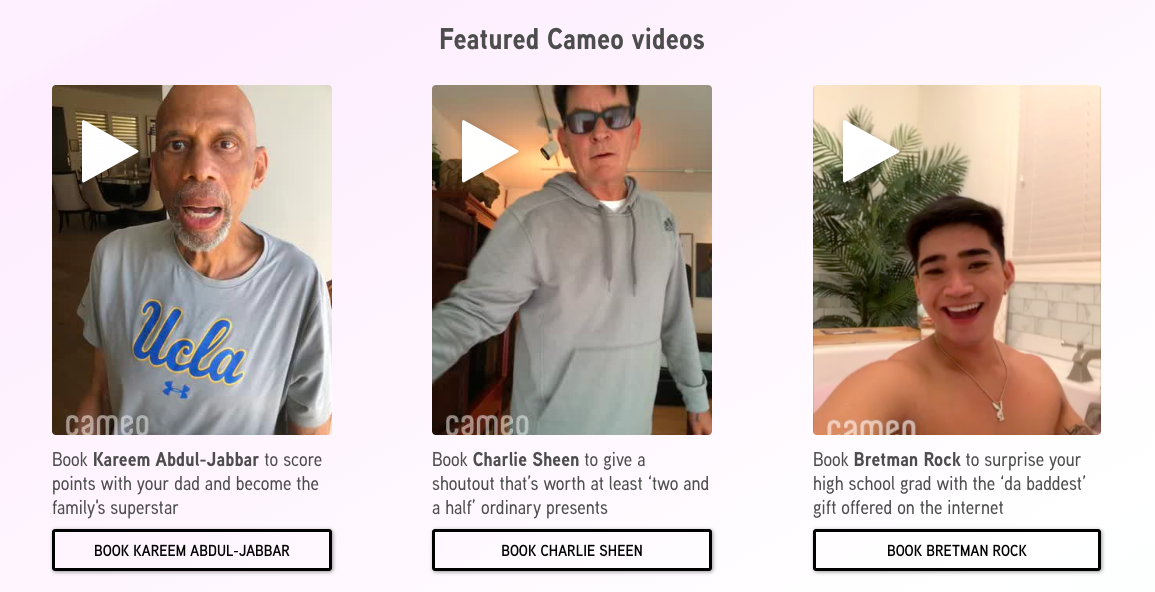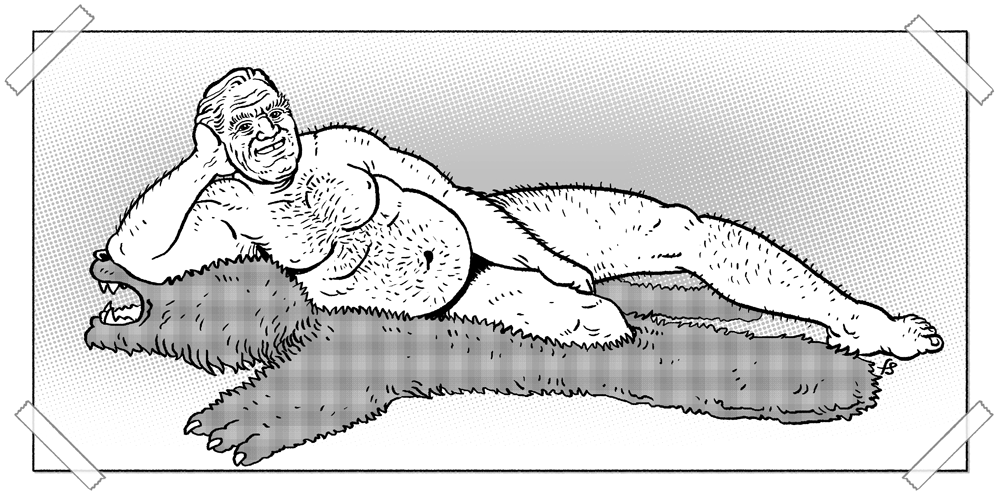The Cameo-ization of Popular Culture
Cameo was a source of morbid fascination for me well before COVID-19 hit. How could it not be?
By selling short video messages from prominent folks that run the gamut from some of the most legendary athletes of all time (legends like Joe Montana and Kareem Abdul-Jabber) to random Donald Trump impersonators and Instagram influencers, Cameo found a way to monetize fame in the most literal possible sense.
From its inception, Cameo capitalized on one of the cheapest yet potent forces in contemporary society: proximity to celebrity.
The average fan will never be rich or powerful enough to be able to pay Snoop Dogg (an investor as well as a personality on Cameo) to perform at their son’s Bar Mitzvah. They similarly won’t be able to pay Paris Hilton’s personal appearance fee to show up at their wife’s 50th birthday.
But Cameo gives Joe Six Pack an opportunity purchase tiny amounts of very famous people’s time and energy and focus for prices that range from egregiously exorbitant to suspiciously cheap.
For a mere 449 dollars, you can pay Joe Montana to spend a minute or two wishing nana a happy 95th birthday. True, for folks like me that’s a small fortune but you can’t put a price on one of the most successful athletes of all time mumbling a name of your choice in exchange for money, but if you were to put a price on it, it’d probably run somewhere between 448 and 450 dollars.
Cameo is selling closeness to fame but distance as well. When I am around famous people, I invariably think, “Oh my God! I’m around someone whose work I revere. This is unbelievably exciting!” followed closely by, “I hope I don’t say or do anything stupid to screw it up!”
The genius of Cameo is that you can interact with your favorite famous people without worrying about embarrassing yourself by asking them something stupid, like whether or not they got to see Humble Pie live.
You don’t actually have to talk to the famous folks you’re paying to deliver a message, nor does the person you’re buying the message for. You just give minimal instructions and then the celebrity whose time you’re buying does the rest. This involves an element of improvisation but I’m sure the Ryne Sandbergs of the world are very used to thinking on their feet and ad-libbing.
That weirdly irresistible combination of distance and closeness took on a whole new significance in light of the worldwide spread of the Corona virus.
You’re not going to have an opportunity to go a concert of a favorite performer, then head backstage after the show for a VIP meet and greet involving a handshake, a photo op and autograph any time soon.
Like so much in our society, that’s pretty much off the table for the indefinite future but Cameo offers, if not the next best thing, then something somewhat analogous: an opportunity to get close to your heroes, after a fashion, while maintaining a safe, comfortable distance.
COVID 19 had to be a godsend for Cameo. Seemingly overnight, the schedules of famous people, along with everyone else, opened up like never before.
The rich and famous found themselves with nothing but time on their hands and here was a service where they could exchange time and fame for cold hard cash and, to a much lesser extent, an opportunity to connect with their fans on a more intimate, direct level.
I am continually surprised by the big names I find on Cameo. I expected it to feature primarily Warholian celebrities like The Backpack Kid, who went viral doing a silly dance called the Floss alongside Katy Perry but who perplexingly refuses to do his signature dance for Cameo users, despite that being the only thing he’s famous for.
Perhaps I should not be surprised that classy folks like Roxanne Gay and Rufus Wainwright have joined Cameo. Whatever stigma selling tiny chunks of your time to strangers in exchange for money might have once had seems to have faded into non-existence as the site lined up bigger and more respectable names.
The Gong Show/Freak Show element of Cameo, whose recent additions include a man pretending to the fly that landed on Mike Pence during the Presidential debate, does not seem to scare away big names like Deepak Chopra, Smokey Robinson, Jason Alexander and Kristen Bell, who similarly hopped onboard just recently, although Bell and Alexander are donating the money they make from the site to the Biden/Harris campaign.
Not Chopra, however. I suspect that every penny he makes from Cameo is going straight up his nose.
Yes, it sure seems like Cameo takes on all comers as “talent”, with the exception of me. Just for a laugh, and because I desperately need money and validation that I still matter, I applied to “enroll as talent” and they have not gotten back to me. That’s understandable. I’m proud of myself and my career but even I will be the first to concede that I have not reached a “Backpack Kid” level of fame although I PROMISE that I will do the Floss dance in every Cameo I record should they ever pick me up as talent, even if the person requesting me angrily insists that I not perform the novelty dance.
Help ensure a future for the Happy Place during an uncertain era AND get sweet merch by pledging to the site’s Patreon account at https://www.patreon.com/nathanrabinshappyplace
Also, BUY the RIDICULOUSLY SELF-INDULGENT, ILL-ADVISED VANITY EDITION of THE WEIRD ACCORDION TO AL, the Happy Place’s first book. This 500 page extended edition features an introduction from Al himself (who I co-wrote 2012’s Weird Al: The Book with), who also copy-edited and fact-checked, as well as over 80 illustrations from Felipe Sobreiro on entries covering every facet of Al’s career, including his complete discography, The Compleat Al, UHF, the 2018 tour that gives the book its subtitle and EVERY episode of The Weird Al Show and Al’s season as the band-leader on Comedy Bang! Bang!
Only 23 dollars signed, tax and shipping included, at the https://www.nathanrabin.com/shop or for more, unsigned, from Amazon





